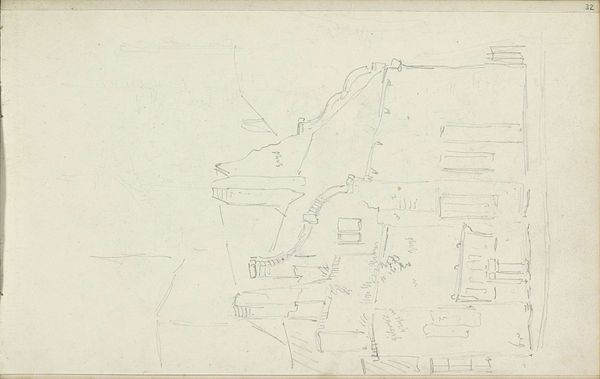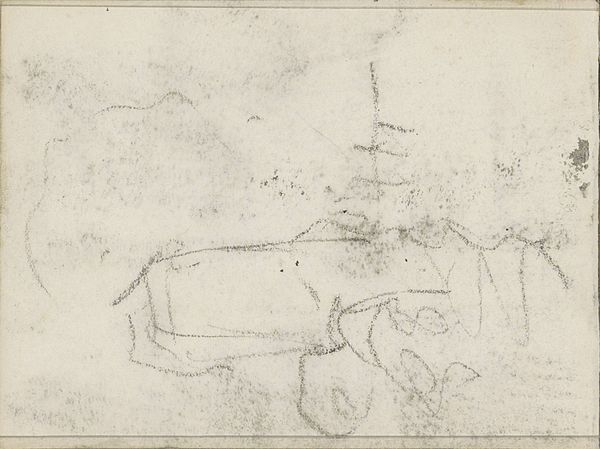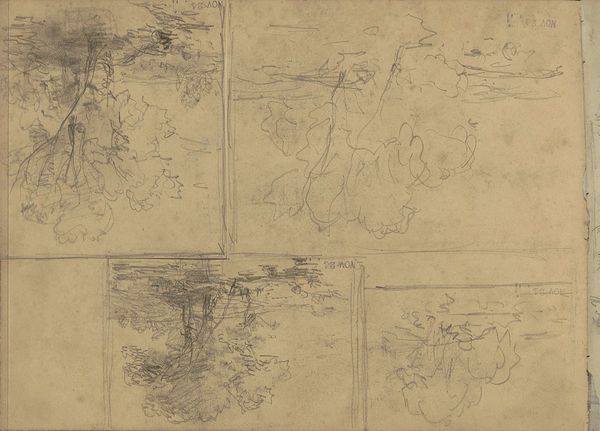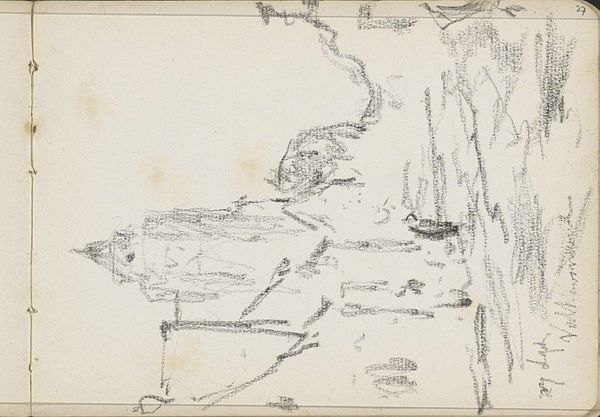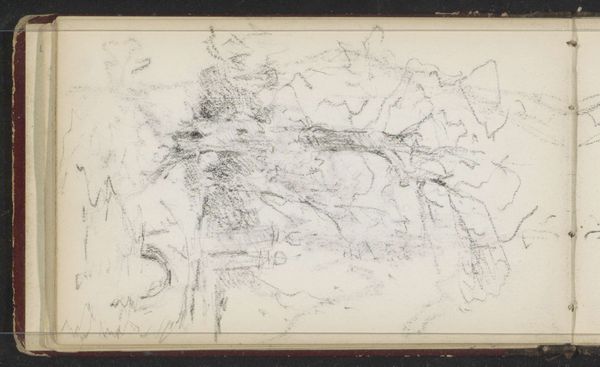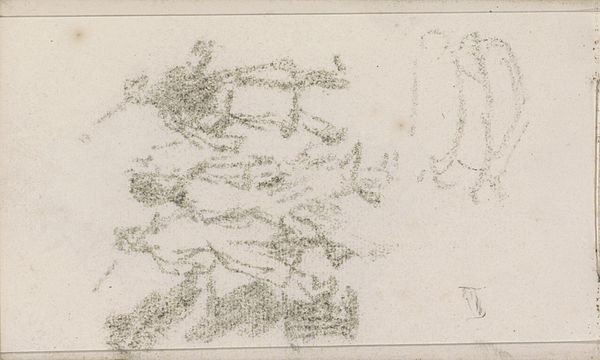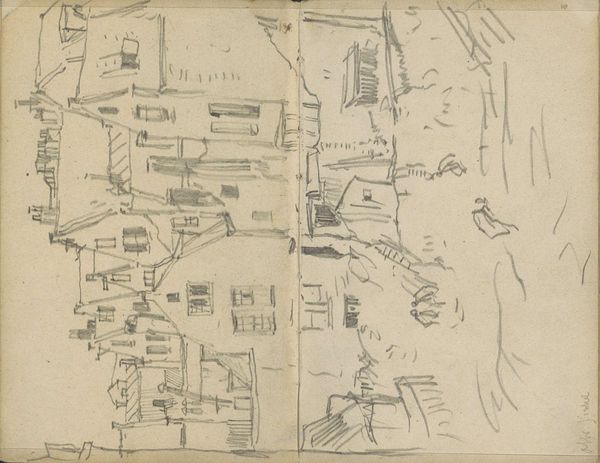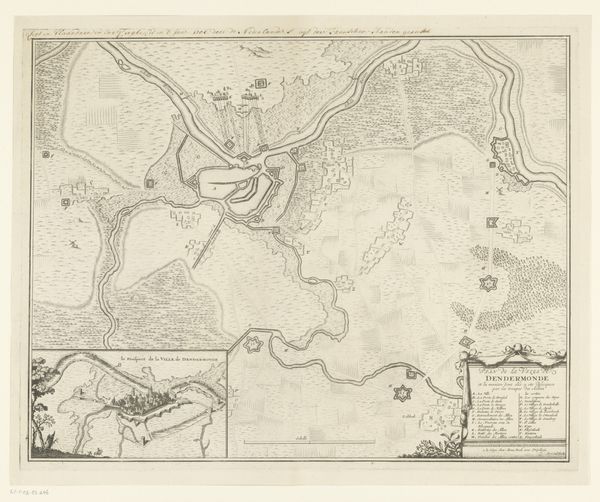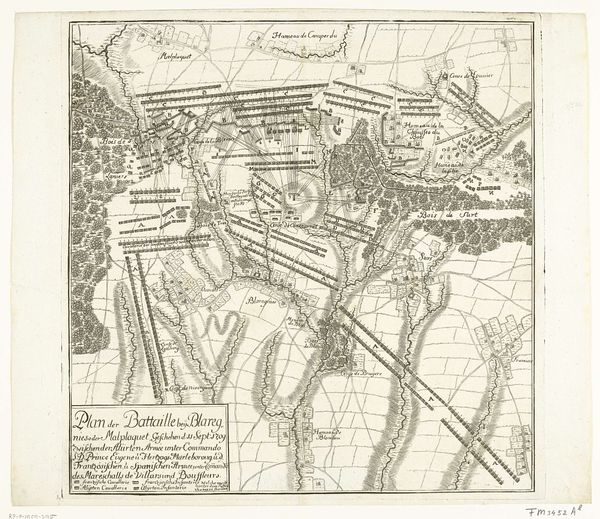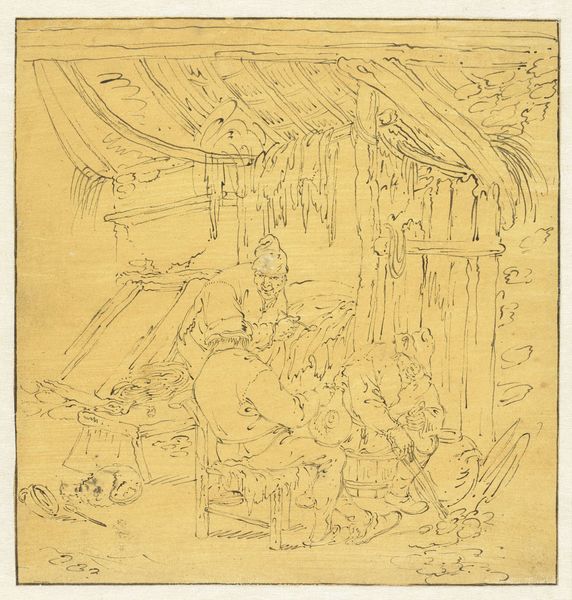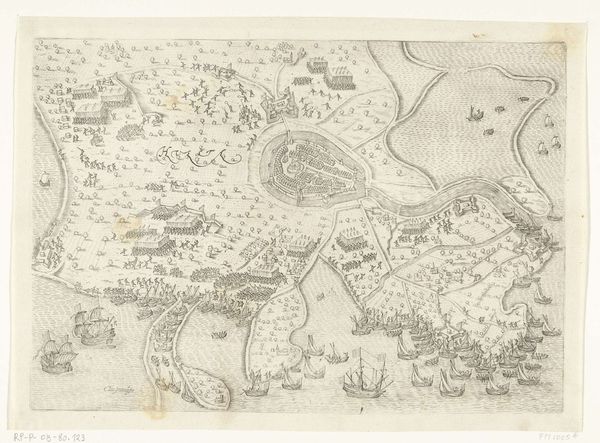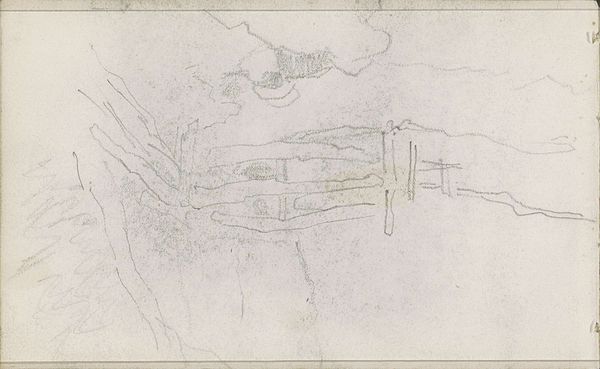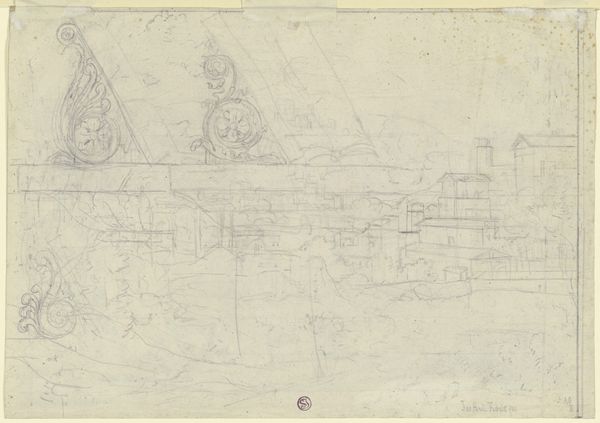
Copyright: Rijks Museum: Open Domain
Editor: So, here we have Jozef Israëls’ “Landscape with a Watermill near a Stone Bridge,” a pencil drawing from around 1902, currently held at the Rijksmuseum. The sketchiness gives it such a raw, immediate feel. What strikes you about it? Curator: Well, it’s fascinating to consider Israëls' place in the art world at the turn of the century. Landscape painting had become thoroughly intertwined with ideas of national identity and the social role of the artist. How does this particular image, with its almost obscured watermill, speak to you in relation to that context? Editor: That's interesting. It does seem… intentionally unromantic. The mill isn’t idealized, it’s almost hidden. Curator: Precisely! Think about the socio-economic shifts happening then. Industrialization was rapidly changing the Dutch landscape and its agricultural identity. Was Israëls, through this less-than-picturesque portrayal, subtly critiquing that change or perhaps documenting a disappearing way of life for a changing art market? What purpose could that artistic choice serve? Editor: It's like he's acknowledging the changing times but not necessarily celebrating them. A bit melancholic, maybe? Was this a common attitude? Curator: Definitely a thread among some artists. They aimed to reflect reality and question progress, understanding the social and historical weight art could carry. Consider, who controlled the means to exhibit and buy such art, and how did that affect the images produced? It isn’t merely about picturesque beauty but engagement with a nation’s cultural and economic trajectory. Editor: I never considered the economic implications that strongly before, and that art landscapes can be that connected to current times. Curator: Exactly, viewing art with the socio-political forces at play can really add to it.
Comments
No comments
Be the first to comment and join the conversation on the ultimate creative platform.
